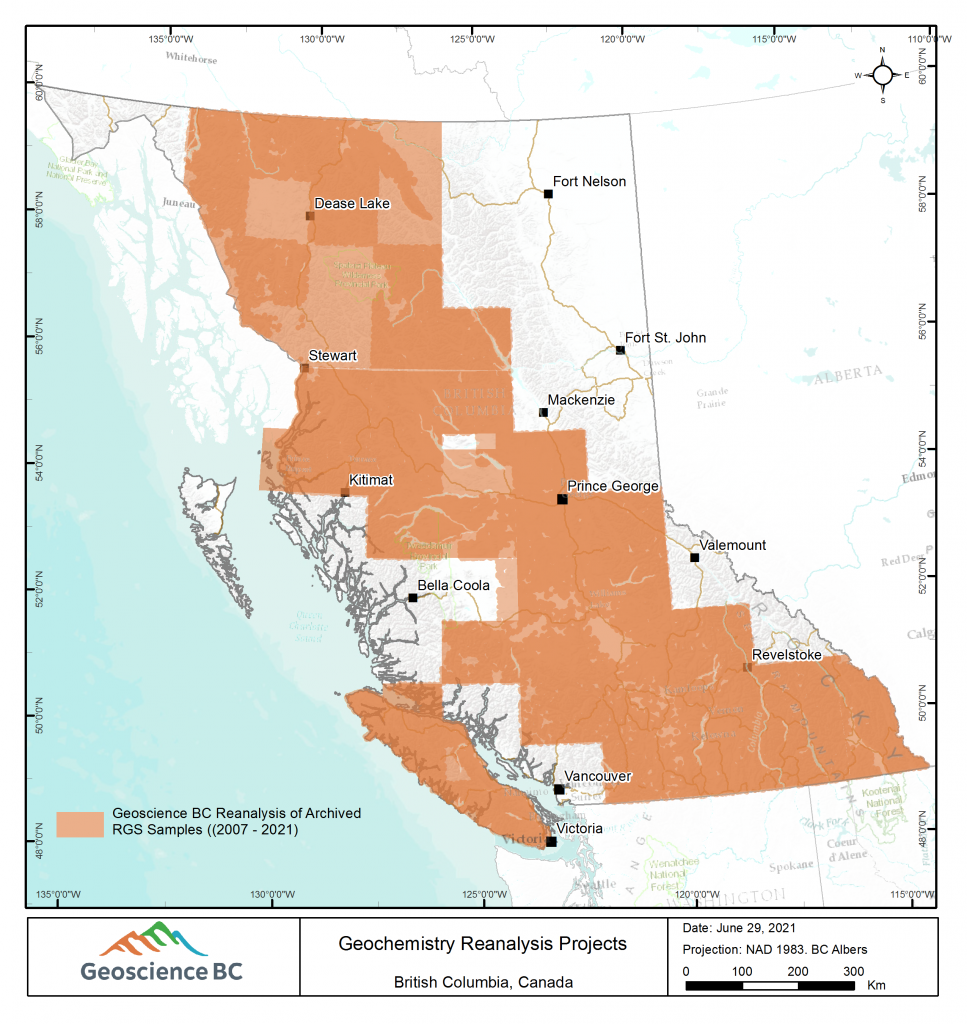Digging Deep: Reanalysis Analysis!
By: Christa Pellett, Vice President, Minerals
Geoscience BC’s Christa Pellett looks at minerals research projects that have added new value to old samples by reanalyzing them using modern techniques.Regional geochemical survey data has long been a staple in early stage mineral exploration in British Columbia. BC’s provincial government hosts the Regional Geochemical Survey (RGS) data set, which is periodically updated to include new information from both the British Columbia Geological Survey (BCGS) and Geoscience BC. Although many Geoscience BC projects have focused on adding new geochemical data points across the province, Geoscience BC has also added value to existing samples by reanalyzing archived material. This month we dig deep into Geoscience BC’s geochemical reanalysis projects!
Why Reanalyze?
Starting with work by the BCGS and Geological Survey of Canada, and later Geoscience BC, most of British Columbia has some regional geochemical coverage. Many RGS samples were collected and analyzed before the technology of the current industry standards for analysis were created. Reanalysis by inductively coupled plasma mass spectrometry (ICP-MS) has been demonstrated to be a cost-effective way of improving regional geochemical information (Jackaman et al., 2009).
As outlined in Jackaman et al. (2009), the benefits of this work are numerous:
- Samples that are reanalyzed are easily accessed from government storage facilities, and therefore can be “collected” and prepared for analysis quickly with no fieldwork required.
- Modern reanalysis provides data on elements not included in the original data set and has improved detection limits for other elements.
- Data is more compatible when the same type of analysis is completed, so upgrading the RGS data to modern industry standards improves data compatibility between old and new surveys.

Photo: Archived stream sediment recovery, from the Nelson-Lardeau Regional Geochemical Reanalysis Project, Kootenays, BC. Photo by W. Jackaman.
Geoscience BC’s ContributionsGeoscience BC has supported numerous reanalysis projects since 2007. Stream sediment, lake sediment and till samples have been reanalyzed, and the updated information made publicly available through the Geoscience BC website. The projects cover all parts of the province, with examples including:
- Central BC (North Central and South Central Regions): Geoscience BC’s first reanalysis project focused on the QUEST Project area, where almost 4,500 stream and lake sediment pulps were reanalyzed and released as Geoscience BC Report 2008-03. More recently, 1,222 till samples were reanalyzed for clay extraction and analysis and 1,039 till samples were reanalyzed.
- Northwest Region: Over 8,500 archived primary stream sediment samples originally collected between 1979 and 1997 were reanalyzed and released as Geoscience BC Report 2011-02. Additional reanalysis work was conducted a year later as part of the QUEST-Northwest project.
- Vancouver Island (Southwest Region): Over 3,300 moss-mat sediment samples and 433 till samples were reanalyzed and released through the Northern Vancouver Island Exploration Geoscience Project.
- Kootenays (Southeast Region): Over 2,900 stream sediment samples, originally collected in 1977, were reanalyzed and released as Geoscience BC Reports 2013-04 and 2013-09.

Map: Geoscience BC’s geochemical reanalysis work as of June 2021. Map by R. Prasad
Geochemical reanalysis projects are an effective way to update historic databases to modern standards and extract a deeper level of understanding from the collected samples. Geoscience BC has been an important contributing partner for many of these studies and will continue to look for additional value in geoscience work throughout the province.